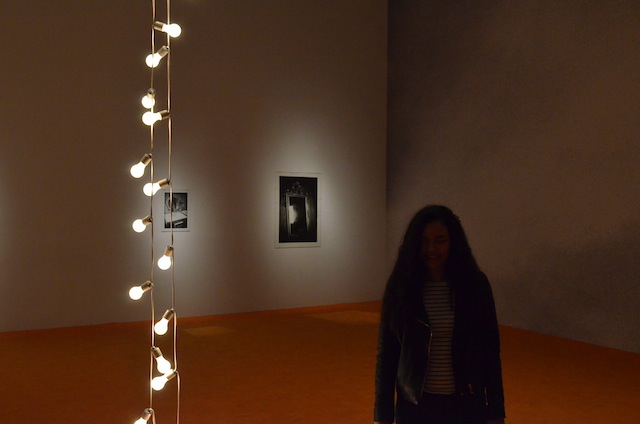
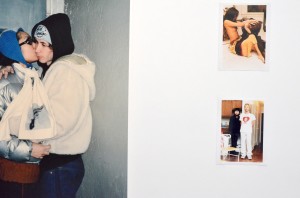
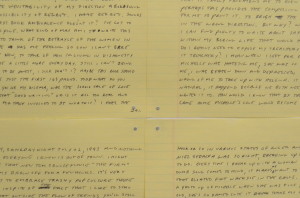
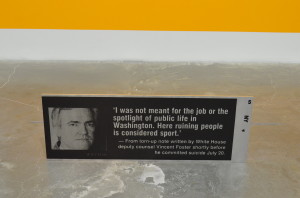
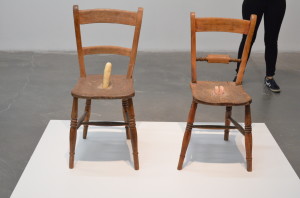
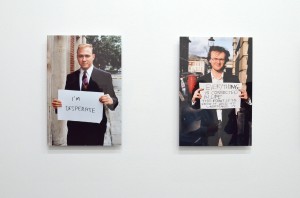
We all know that the 90s is having a serious moment in New York. From our re-fascination with grunge, the Spice Girls, plaid tied at the waist, Lisa Frank and Doc Marten’s on every kid south of 34th Street. But the fact of the matter is that no matter how well we pay homage to the decade that was – we can’t recreate what happened or what was in the Ether at the time.
But we can look at the art that was being made in that decade and get a gist of what was really going on in the creative circles of New York. Yet, the New Museum narrowed it down to one year in that decade where everything felt better when you were in denim – 1993. The exhibition titled ‘NYC 1993: The Experimental Jet Set, Trash + No Star’ acts as a time capsule for the feeling in New York during ’93, just twenty years ago, when the art was dark/moody, when Clinton was inaugurated and AIDS became a crisis.
Being just a kid in 1993, I really had no gauge of just how things were happening from a culture standpoint, but after a second look (because upon the first, my brain was left a little scattered – the exhibit is very wide & varied), I realized just how angsty the culture of creatives was.
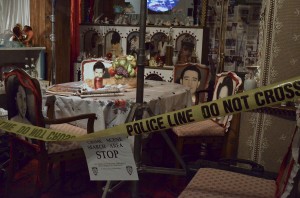
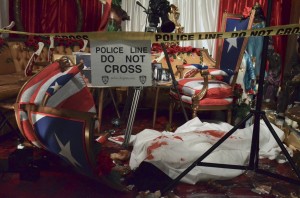
The installation by Pepon Osorio illustrates a recreated murder scene in the South Bronx. At first glance, the hyperbolized set of a living and dining room lined with meticulously gaudy decorations of machetes, plastic covered couches and bowls of ceramic fruit give clues of Puerto Ricanness but force us to think of our own prejudices. The sterotypes that come to mind when looking at Osorio’s set force us to look at ourselves and any pre-conceived notions associated to how Hispanics are portrayed in the media – or at least that seemed to be the artist’s statement. Osorio’s installation “The Scene of the Crime (Whose Crime?)” was also shown in the Whitney Biennial in 1993.
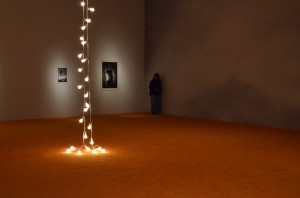
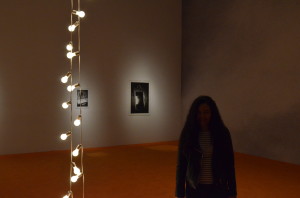
The installation shown by Felix Gonzalez Torres of a single strand of light bulbs from ceiling to floor in conjunction with Kristin Oppenheim’s audio installation provided the most captivating experience of the entire exhibition. When you exit the elevators and walk out into the fourth floor, you become immediately encapsulated by the HIV positive artist’s subconscious. The wide open space lined with Rudolf Stingel’s orange carpet, the billboard of overcast skies with views of one bird flying and one bird descending, and the hauntingly romantic sounds engulf you and the energy in the room is quite different from the other floors of the exhibition. If you go for nothing else, you should go just to experience the poetry of experience that was created by the late Gonzalez Torres.
New Museum’s NYC 1993: The Experimental Jet Set, Trash and No Star closes this Sunday, May 26th. 235 Bowery New York, NY 10002, USA.











